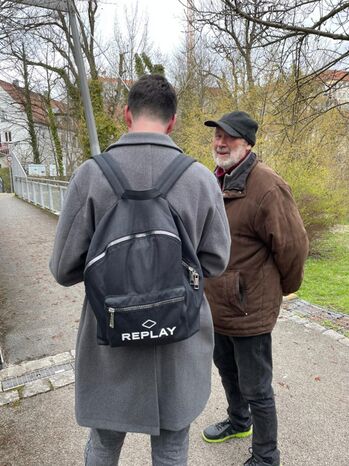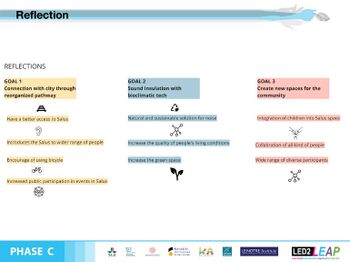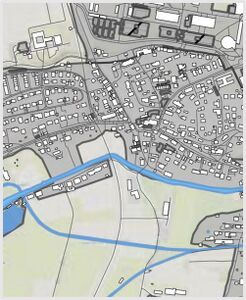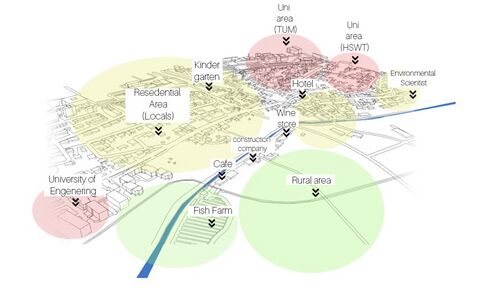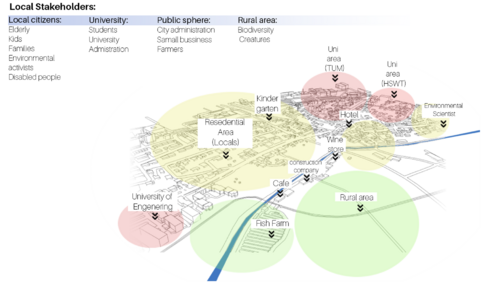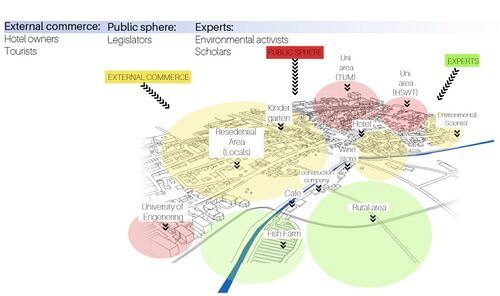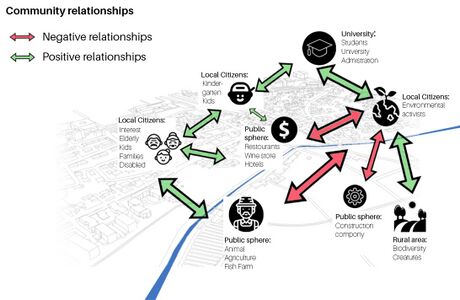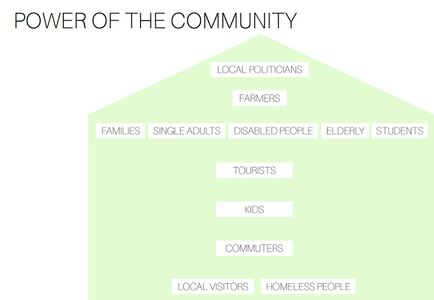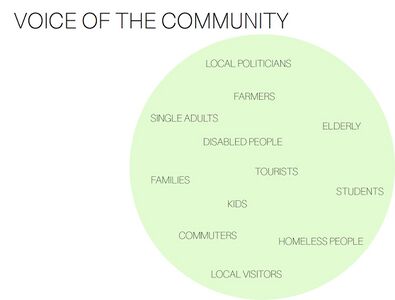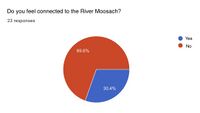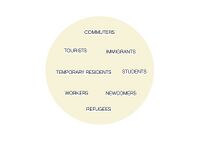Freising-Moosach Landscape Democracy 2022 Team 1: Difference between revisions
No edit summary |
(→Your Name and title of your personal analysis: sahar Esmaeilian) |
||
| Line 101: | Line 101: | ||
</gallery> | </gallery> | ||
== | == Sahar Esmaeilian == | ||
<gallery caption=" " widths="200px" heights="150px" perrow="2"> | <gallery caption=" " widths="200px" heights="150px" perrow="2"> | ||
Revision as of 16:04, 9 May 2022
>>>back to working groups overview
For help with editing this Wiki page use this link.
For more details on assignments and key readings please use this link.
Landscape Democracy Rationale
The population changes of the Munich periphery between the years 1990 and 2015 represented to the region an intense urbanization process. The emergence of new commercial and economic attractions encourages migration to the city and stimulates the growth not only of the greatest urban center but of the cities around it, as well.
For example, the graph below shows how the city of Freising – a satellite city of Munich - grew in the last 180 years, and it can be observed how the numbers went up since 1987.
If the urban sprawl continues at the scale observed, the conurbation of cities can become a problem for the local landscape. The current environmental protection areas will have to be adapted., which may lead to microclimate changes, water, air, and noise pollution, putting at risk natural habitats and the local biodiversity.
Location and Scope
- You can edit this map with the map editor
Phase A: Mapping Your Community
Welcome to Your Community and Their Landscape
- In a first moment some data available in the District Office was taken into consideration which informed that Freising is a city with approximatedly 50 thousand inhabitants. The landscape of the town is marked by two hills, the Cathedral Hill and the Weihenstephan Hill, and two rivers, the river Isar and it's tributary, the river Moosach that crosses most of the urban part. This information was useful to situate us on the place to be worked on, and to understand that for a better analysis of the situation, we should reduce the scale of observation and give the locals a voice. Therefore, the main method to identify the community was empirical observation. Therefore, it was necessary to reduce the scale of the research scope. Covering a part of the urban scale of Freising it was identified the following community members: Homeless people, local visitors, commuters, kids, tourists, elderly people, disabled people, students, families, single adults, farmers, and local politicians. Each of these members interacts in a particular way with the scenario and has individual contributions to the landscape.
Groups of Actors and Stakeholders in Your Community
- In a general idea of Freising, the members of the community identified during the living lab were farmers, families, kids, single adults, students, commuters, local visitors, elderlies, disabled people, tourists, and the fauna and flora. They are distributed in the city in a non-organized way and interact with each other through mutual or opposing interests. The stakeholders are the party interested in investing in the city, aiming for some profit. Regarding the situation of Freising as one the of most urbanized cities in Bavaria, the local stakeholders identified were farmers, hospitals, local universities, schools, landlords, city council, hostels owners, city commerce, and the external stakeholders – that can be part of the local stakeholders – are hotel owners, scholars/ experts, legislators, tourists, and social/ environmental activists. All stakeholders have specific interests in the city and the community members, thus, creating individual relationships with each of them. The following maps illustrate their relationship and interests.
Relationships Between Your Actors and Groups
- Identifying interests is crucial to comprehend whether the relationship is positive or negative between the actors and the groups. Therefore, the groups were organized in order of dominance of power and voice over the community arrangement. The following conceptual maps illustrate the communities, their interests, and their power relation:
Summary of Your Learnings from the Transnational Discussion Panel
- As a group we acknowledge that there was some differeces between the results of the mapping mainly because of the diverse national context we are working on. It was also very insightful to see how different cultures approached the comunity, and worked on their landscape. Regarding our situation, we decided to dig deeper in the economic aproach and power incluence we observed, so we can better understand the relationship between the locals and the farms - which we considered the most powerful economic factor influencing in Freising.
Theory Reflection
- Landscape democracy is a good clue for landscape architects.
- Firstly, to understand the unique local communities, which play an enormous role in creating the future project.
- The second step is identifying the relationships between communities. This output clarifies the future scenario. Moreover, it helps to create positive connections through the planning design, for example, back to our community map how we can improve the relationship between environmentalists and owners of a fish farm through our future scenario.What function we can create in the concept of this two positively. This principle gives a lot of insight into our work. This way of thinking gives a significant output, which helps not ignore any community and keep the focus on it during the work.
References
- Views of the world. Changing demographies of Germany. October 3, 2012. Available at: < https://www.viewsoftheworld.net/?p=2719 >
- Bayerisches Landesamt für Statistik. Große kreisstadt Freising 09 178 124. Statistik kommunal 2021. Available at: <https://www.statistik.bayern.de/mam/produkte/statistik_kommunal/2021/09178124.pdf>
Phase B: Democratic Landscape Analysis and Assessment
Agata Ziobrowska: Attachment
Sahar Esmaeilian
- Addyouruniqueimagename.jpg
insert text here
- Addyouruniqueimagename.jpg
insert text here
Your Name and title of your personal analysis
- Addyouruniqueimagename.jpg
insert text here
- Addyouruniqueimagename.jpg
insert text here
Your Name and title of your personal analysis
- Addyouruniqueimagename.jpg
insert text here
- Addyouruniqueimagename.jpg
insert text here
Your Name and title of your personal analysis
- Addyouruniqueimagename.jpg
insert text here
- Addyouruniqueimagename.jpg
insert text here
Phase C: Collaborative Visioning and Goal Setting
The Scene in Your Story of Visioning
- insert text here
- Addyouruniqueimagename.jpg
insert text here
- Addyouruniqueimagename.jpg
insert text here
- Addyouruniqueimagename.jpg
insert text here
The Actors in Your Story of Visioning
- insert text here
- Addyouruniqueimagename.jpg
insert text here
- Addyouruniqueimagename.jpg
insert text here
- Addyouruniqueimagename.jpg
insert text here
The Story of Visioning
- insert text here
- Addyouruniqueimagename.jpg
insert text here
- Addyouruniqueimagename.jpg
insert text here
- Addyouruniqueimagename.jpg
insert text here
Reflect on Your Story of Visioning
- insert text here
- Addyouruniqueimagename.jpg
insert text here
- Addyouruniqueimagename.jpg
insert text here
- Addyouruniqueimagename.jpg
insert text here
Phase D: Collaborative Design, Transformation and Planning
Your Prototyping Action
- insert text here
- Addyouruniqueimagename.jpg
insert text here
- Addyouruniqueimagename.jpg
insert text here
- Addyouruniqueimagename.jpg
insert text here
The Evolution of Your Prototyping Action
- insert text here
- Addyouruniqueimagename.jpg
insert text here
- Addyouruniqueimagename.jpg
insert text here
- Addyouruniqueimagename.jpg
insert text here
The Plan Behind Your Prototyping Action
- insert text here
- Addyouruniqueimagename.jpg
insert text here
- Addyouruniqueimagename.jpg
insert text here
- Addyouruniqueimagename.jpg
insert text here
The Realization of Your Prototyping Action
- insert text here
- Addyouruniqueimagename.jpg
insert text here
- Addyouruniqueimagename.jpg
insert text here
- Addyouruniqueimagename.jpg
insert text here
Reflect on Your Prototyping Action
- insert text here
- Addyouruniqueimagename.jpg
insert text here
- Addyouruniqueimagename.jpg
insert text here
- Addyouruniqueimagename.jpg
insert text here
Phase E: Collaborative Evaluation and Future Agendas
Collaborative Evaluation and Landscape Democracy Reflection
- insert text here
- Addyouruniqueimagename.jpg
insert text here
- Addyouruniqueimagename.jpg
insert text here
- Addyouruniqueimagename.jpg
insert text here
The Actors in your Collaborative Evaluation
- insert text here
- Addyouruniqueimagename.jpg
insert text here
- Addyouruniqueimagename.jpg
insert text here
- Addyouruniqueimagename.jpg
insert text here
Reflection on the Online Seminar
- insert text here
- Addyouruniqueimagename.jpg
insert text here
- Addyouruniqueimagename.jpg
insert text here
- Addyouruniqueimagename.jpg
insert text here
Reflection on your Living Lab Process
- insert text here
- Addyouruniqueimagename.jpg
insert text here
- Addyouruniqueimagename.jpg
insert text here
- Addyouruniqueimagename.jpg
insert text here
Your Living Lab Code of Conduct
- insert text here
- Addyouruniqueimagename.jpg
insert text here
- Addyouruniqueimagename.jpg
insert text here
- Addyouruniqueimagename.jpg
insert text here
Process Reflection
- insert text here
